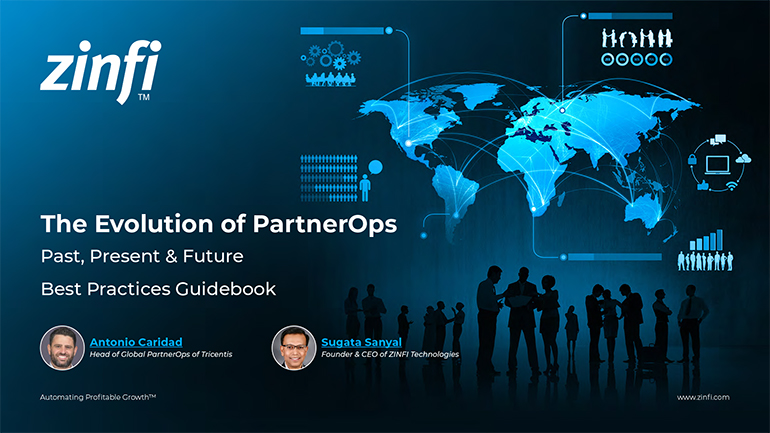Glossary - How to - Partner Marketing Automation
How to Implement Partner Marketing Automation?
Introduction
Understanding Partner Marketing Automation
Partner marketing automation is the technology used to streamline, optimize, and manage marketing activities within a partner ecosystem. It enables organizations to automate tasks such as lead distribution, campaign management, content sharing, and performance tracking. Companies leveraging partner marketing automation have improved efficiency, better ROI, and stronger partner relationships.
In Partner Relationship Management (PRM), automation helps seamlessly integrate various marketing functions with partner collaboration, allowing businesses to scale their partner programs effectively. Organizations can reduce manual effort, enhance reporting, and ensure brand consistency across multiple marketing channels.
The Role of Partner Marketing Automation in PRM
PRM solutions incorporate marketing automation features to enhance communication, engagement, and campaign execution across partner networks. Partner marketing automation allows vendors to:
- Provide co-branded marketing materials
- Automate lead distribution and tracking
- Enable data-driven decision-making
- Streamline partner enablement
Organizations can improve partner participation, optimize marketing spend, and generate higher-quality leads by implementing a structured approach to partner marketing automation.
Key Takeaways:
Establish Clear Partner Marketing Goals:
Before implementing automation, it is crucial to define your marketing objectives. Common goals include:
- Increasing partner engagement
- Generating more qualified leads
- Enhancing brand consistency
- Improving conversion rates
By setting measurable KPIs, businesses can effectively monitor the success of their partner’s marketing automation strategy.
Choose the Right Partner Marketing Automation Platform:
Selecting a robust automation platform is key to success. Features to look for include:
- Multi-channel marketing support
- Lead tracking and analytics
- Co-branded content management
- Campaign personalization capabilities
A well-integrated solution ensures seamless collaboration between vendors and partners while optimizing marketing performance.
Automate Lead Distribution and Nurturing:
With automation, businesses can efficiently assign leads to partners based on predefined rules. Steps include:
- Using AI-driven lead scoring
- Assigning leads to the right partners
- Automating follow-up email sequences
This process ensures leads are nurtured and converted into revenue-generating opportunities.
Enable Partners with Co-Branded Content:
Providing ready-to-use marketing materials enhances partner success. Essential resources include:
- Email templates
- Landing pages
- Social media graphics
- Product brochures
Automating content distribution ensures partners access the latest marketing assets without manual intervention.
Measure and Optimize Performance:
Tracking performance metrics helps in continuous optimization. Key metrics to monitor include:
- Partner engagement rates
- Lead conversion rates
- Marketing ROI
Using these insights, organizations can refine their strategies for better results.
Summary of Key Takeaways:
Implementing partner marketing automation requires a strategic approach. Businesses should start by defining marketing objectives and selecting a suitable automation platform. Automating lead distribution and nurturing ensures that leads reach the right partners while co-branded content empowers partners with effective marketing materials. Finally, measuring and optimizing performance allows organizations to refine their strategy for better outcomes. When executed effectively, partner marketing automation enhances efficiency and boosts revenue growth.
Industry-Specific Examples:
- Automotive Manufacturing: Automakers use partner marketing automation to support dealerships with digital marketing assets, enabling them to promote new models effectively.
- Consumer Electronics: Tech companies distribute co-branded campaign materials to retailers, ensuring consistent messaging and improved sales conversions.
- Energy Production: Renewable energy firms leverage automation to educate their distribution partners on new solutions, increasing product adoption.
- Financial Services: Banks and insurance providers automate lead generation and content sharing with affiliate financial advisors for customer acquisition.
- Food and Beverage: Franchises use automated marketing to provide promotional materials to outlets, ensuring brand uniformity across locations.
- Healthcare Services: Medical device manufacturers enable partners with regulatory-compliant marketing assets, facilitating effective outreach.
- Information Technology: IT firms distribute whitepapers and product demos to partners, helping them generate leads and close deals more efficiently.
- Pharmaceutical Development: Pharma companies educate partners on new drug releases through automated marketing campaigns, increasing awareness and sales.
- Retail Industry: E-commerce brands offer automated marketing support to resellers, helping them attract more customers.
- Telecommunications: Telecom providers use automation to run co-branded campaigns with network partners, enhancing market reach and subscriber acquisition.
Conclusion:
Partner marketing automation is a game-changer for organizations looking to optimize their partner programs. Businesses can enhance efficiency and drive better results by setting clear goals, selecting the right platform, automating lead distribution, enabling partners with co-branded content, and continuously measuring performance.
Associated Keywords:
- Partner Marketing Software
- Automated Partner Campaigns
- PRM Marketing Automation















